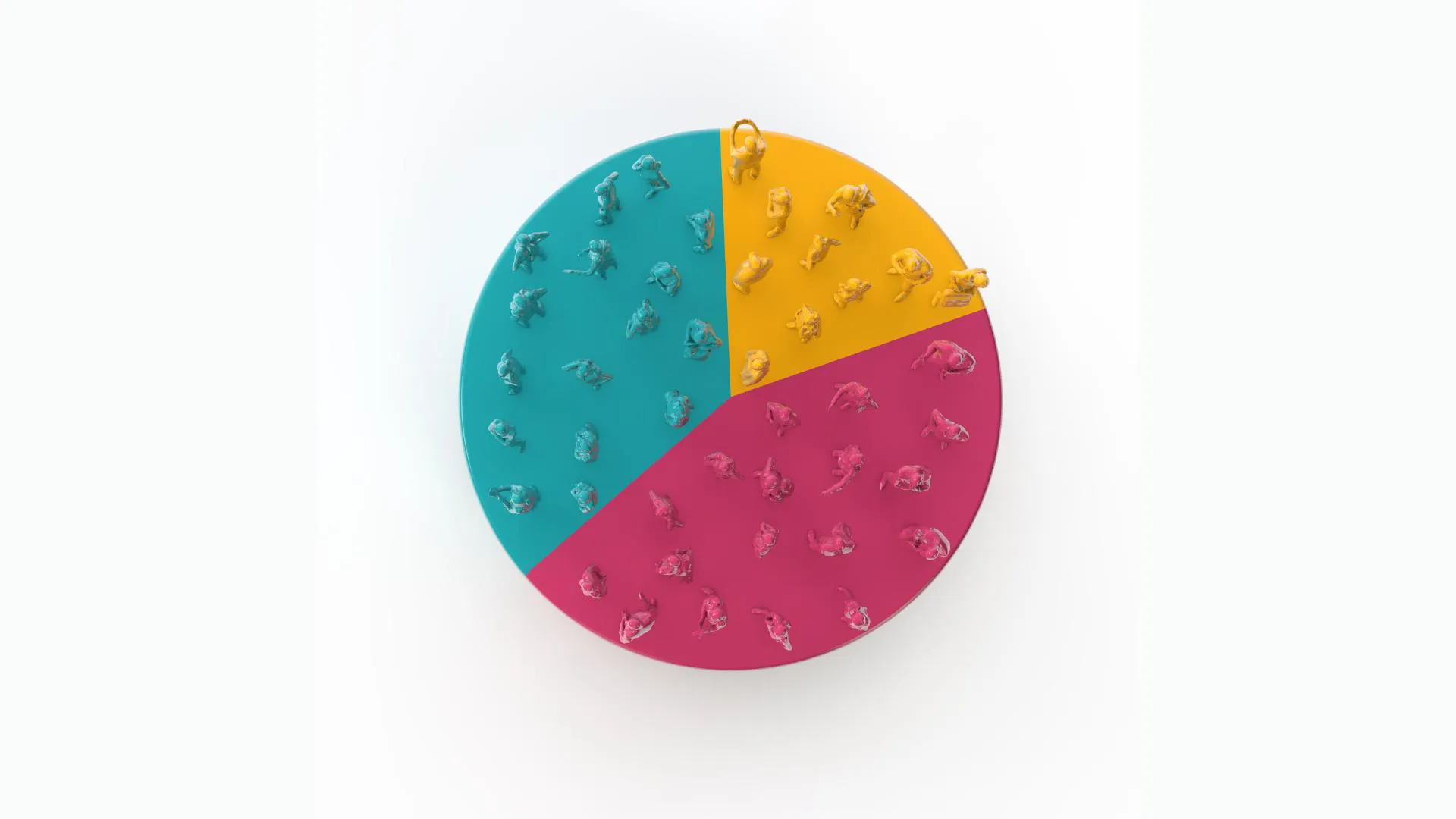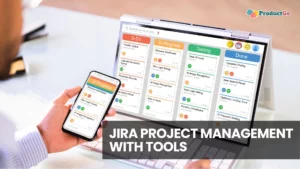Welcome to the insightful world of customer personas – a key ingredient in the recipe for business success. Whether you’re a seasoned marketer, a budding entrepreneur, or somewhere in between, understanding how to build an ideal customer persona is essential.
This guide delves deep into what a customer persona is, distinguishes it from a buyer persona, and outlines the vital steps and components for creating personas that truly resonate with your target audience.
Table of Contents
What is a Customer Persona?
Understanding the concept of a customer persona (or buyer persona) is crucial for businesses aiming to effectively tailor their products, services, and marketing efforts.
Definition and Importance
A customer persona, often referred to as a user persona, is a semi-fictional character that represents a significant segment of a business’s target market. These personas are crafted based on market research and real data about existing customers. They encompass various aspects of customer behavior, preferences, demographics, and psychographics.

The creation of customer personas is not a mere marketing exercise; it’s a fundamental strategy that impacts product development, content creation, customer service, and sales processes. Personas help businesses understand their customers’ needs, experiences, behaviors, and goals, leading to more effective and targeted marketing strategies and product development that resonate with the target audience.
Customer Persona vs. Buyer Persona
While often used interchangeably, customer personas and buyer personas are distinct concepts. A customer persona represents the end user of a product or service — the individual who will directly interact with and benefit from it. In contrast, a buyer persona is specifically focused on the individual or entity responsible for the purchasing decision. This is particularly relevant in B2B contexts where the buyer may not be the end user.
Understanding this distinction is key. For businesses, especially those in B2B markets, it’s essential to cater to both the needs and preferences of the end user (customer persona) and the requirements and decision-making processes of the purchaser (buyer persona).
→ Related content: Why working with personas is essential for software development?
Steps to Create Personas
Creating a customer persona involves several key steps:
- Data Collection: Gather information through market research, surveys, interviews, and analysis of existing customer data.
- Analysis and Identification: Analyze the collected data to identify common patterns and characteristics among your customers.
- Persona Development: Develop each persona by giving them a name, demographic details, interests, behavioral traits, and specific needs or challenges they face.
- Narrative Creation: Craft a narrative or story for each persona. This should include their background, daily life, challenges, and how they interact with your product or service.
- Validation and Refinement: Continuously validate and refine your personas based on ongoing customer feedback and changing market trends to ensure they remain accurate and relevant.
The Key Components for Building Customer Personas
Creating a detailed buyer persona involves combining various elements that give a complete picture of who your customers are, what they value, and how they interact with your brand or product.

Demographic Information
Demographics provide the basic structure of a persona and include quantifiable characteristics such as:
- Age: Understanding the age range helps in tailoring communication and product design.
- Gender: Knowing the gender (if relevant to your product) can influence marketing messaging and product development.
- Location: Geographical information can affect purchasing habits, product availability, and marketing strategies.
- Education Level: This can influence a persona’s preferences and purchasing power.
- Income Level: Income brackets help in understanding a persona’s spending habits and priorities.
Psychographic Traits
Psychographics delve deeper into the psychological aspects of a persona, including:
- Interests: What hobbies or activities does your persona engage in during their free time?
- Values: What are their core beliefs and principles?
- Lifestyles: How does your persona live their day-to-day life? Are they health-conscious, tech-savvy, environmentally aware, etc.?
- Beliefs: What are their attitudes towards certain topics relevant to your product or industry?
Behavioral Data
Understanding how your persona interacts with products or services like yours is crucial:
- Purchasing Habits: How often do they buy products like yours, and what is their typical spending range?
- Brand Interactions: How do they interact with brands online and offline? Are they active on social media, do they read blogs, or prefer email communication?
- User Experience Feedback: What are their past experiences with similar products or services, and how did they feel about them?
Goals and Challenges
Identifying the goals and challenges helps in aligning your product or service as a solution:
- Aspirations: What are the personal or professional goals of your persona?
- Pain Points: What challenges or problems are they facing that your product or service can solve?
Incorporating Feedback and Data
Finally, leveraging actual customer feedback and data analytics ensures accuracy:
- Customer Feedback: Use surveys, interviews, and reviews to gather insights.
- Data Analytics: Analyze data from your website, social media, and other digital platforms to understand how customers interact with your brand.
By combining these elements, you create a well-rounded image of your customer. This information becomes invaluable as you tailor your marketing strategies, product development, and overall business approach to meet the specific needs and preferences of your target audience.
Tips on Creating Persona Types
Creating different types of personas requires a nuanced understanding of your audience segments.

Identifying Niche Markets
- Deep Market Research: Conduct in-depth research to uncover less obvious, niche segments within your broader market. Use surveys, social media analytics, and customer interviews to gather detailed insights.
- Look Beyond the Obvious: Sometimes, the most valuable customer segments aren’t the most visible. Explore secondary data sources and trends to identify unique niches.
- Analyze Competitor Strategies: Understanding how competitors segment their market can reveal untapped opportunities or different ways to approach your audience.
→ Related content: The Vital Role of Personas in Product Management: A Comprehensive Guide
Avoiding Stereotypes and Assumptions
- Base Personas on Real Data: Use actual customer data to avoid stereotypes. Your personas should reflect real segments of your market, not assumptions or clichés.
- Continuous Customer Interaction: Engage with your customers regularly. This ongoing interaction provides a reality check and prevents your personas from becoming outdated or based on biases.
- Diverse Perspectives: Include team members from diverse backgrounds in the persona creation process to ensure a wide range of perspectives and avoid unconscious biases.
Consistency and Flexibility
- Standardize the Framework: Use a consistent framework for creating each persona. This ensures that all personas are comparable and cover all necessary aspects.
- Adapt as Needed: Be flexible in your approach. If certain components of the persona template don’t apply to a specific segment, adapt or omit them as needed.
- Periodic Reviews and Updates: Market dynamics and customer preferences change over time. Regularly review and update your personas to ensure they remain relevant and accurate.
By adhering to these tips, businesses can develop robust personas that accurately represent their various customer segments, leading to more effective and targeted marketing strategies and product development.
Types of Customer Personas
Different types of customer personas provide a multi-faceted view of a business’s market, catering to various needs and behaviors. Understanding these types helps in creating more targeted and effective marketing strategies.

End-User Persona
- Description: Represents the actual users of the product or service. This persona focuses on the daily life, habits, and specific needs of the user.
- Purpose: Essential for product design and user experience, ensuring that the end product meets the real needs of its users.
Decision-Maker Persona
- Description: Crucial in B2B settings, this persona represents the individual who makes the final purchasing decision, often considering factors like budget, company needs, and ROI.
- Purpose: Helps tailor sales and marketing strategies to address the concerns and priorities of those who have the authority to purchase.
Influencer Persona
- Description: Encompasses individuals who influence the purchasing decision, such as industry experts, social media influencers, or peers.
- Purpose: Important for understanding how external opinions can sway potential customers and for developing influencer marketing strategies.
Economic Buyer Persona
- Description: Focuses on the person who controls the budget and finances in a purchasing decision, particularly relevant in B2B scenarios.
- Purpose: Assists in creating strategies that highlight cost-effectiveness and ROI to appeal to financially-focused decision-makers.
Gatekeeper Persona
- Description: Often found in corporate environments, this persona controls information or access to decision-makers.
- Purpose: Helps in developing strategies to effectively communicate and negotiate with those who can grant or block access to key individuals.
Technical Buyer Persona
- Description: Relevant in industries where technical specifications are crucial, focusing on individuals concerned with the technical aspects of a product.
- Purpose: Useful for tailoring communication that addresses technical queries and specifications.
Negative Persona
- Description: Represents the type of customer the business does not want to target. This could include individuals who are too costly to acquire or serve.
- Purpose: Helps in refining marketing strategies to avoid wasting resources on unprofitable segments.
Each persona plays a vital role in shaping a company’s marketing strategies, product development, and customer engagement approaches.
For readers interested in applying the concepts of customer personas practically and efficiently, I recommend exploring the new Advanced Personas feature by ProductGo. This feature, designed for use within Jira, offers a comprehensive and user-friendly approach to crafting detailed, realistic customer personas.
For teams already using Jira for project management, the Advanced Personas feature by ProductGo could significantly enhance their ability to create detailed and effective customer personas.
→ Try ProductGo – Agile User Story Map, Roadmaps & Persona for Jira
Final Words
Crafting an ideal customer persona is a journey of understanding, empathy, and strategic thinking. As we’ve explored, a well-built persona is a blend of demographics, psychographics, behavior patterns, goals, and challenges, brought to life through detailed narratives and continuous refinement.
Remember, your customer personas are living, dynamic profiles that evolve as your market and customers change. Regularly revisiting and updating your personas ensures they remain accurate and relevant, guiding your business decisions effectively.













